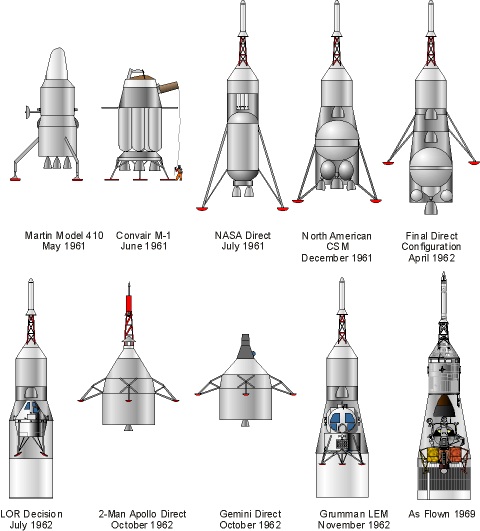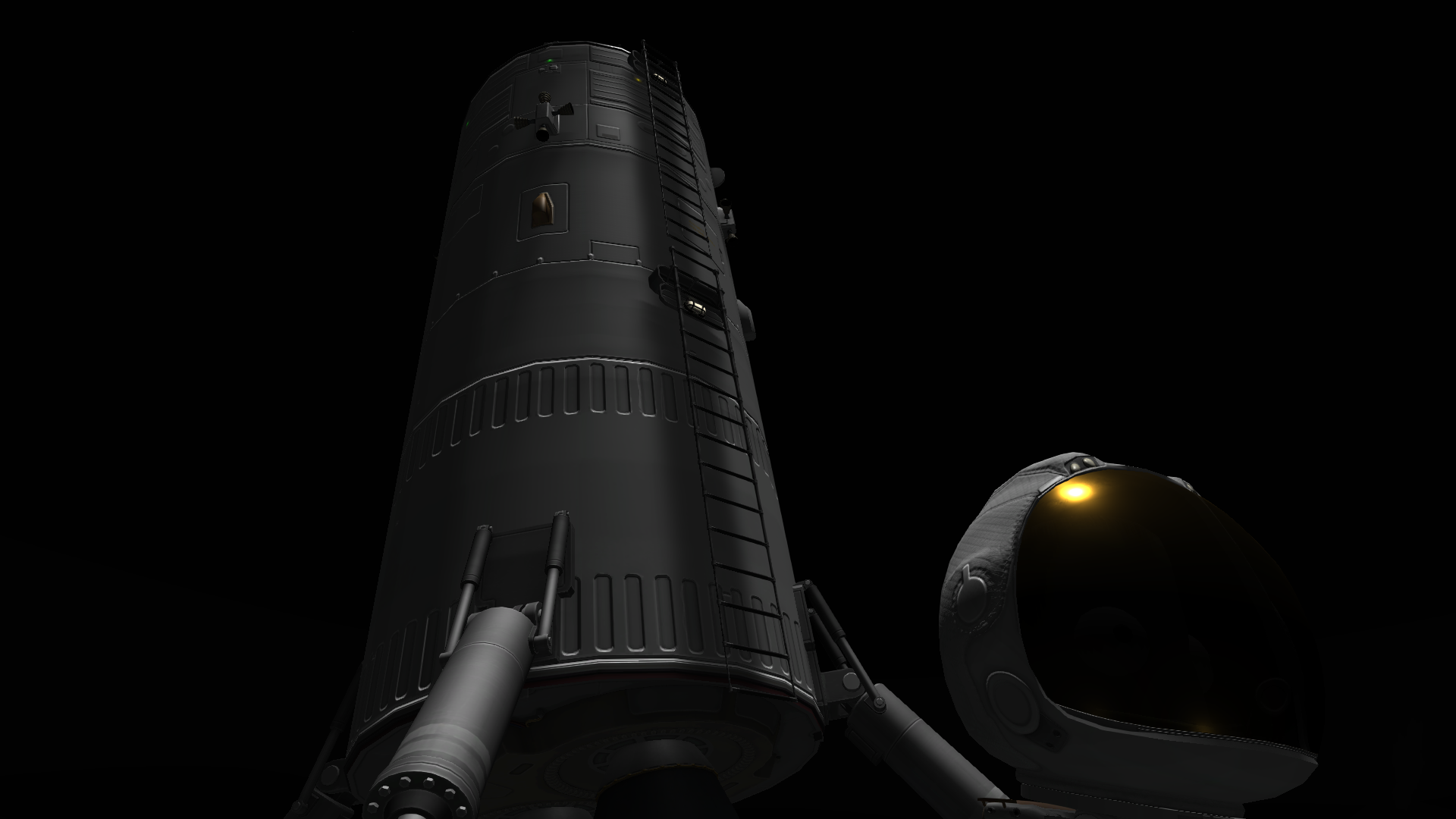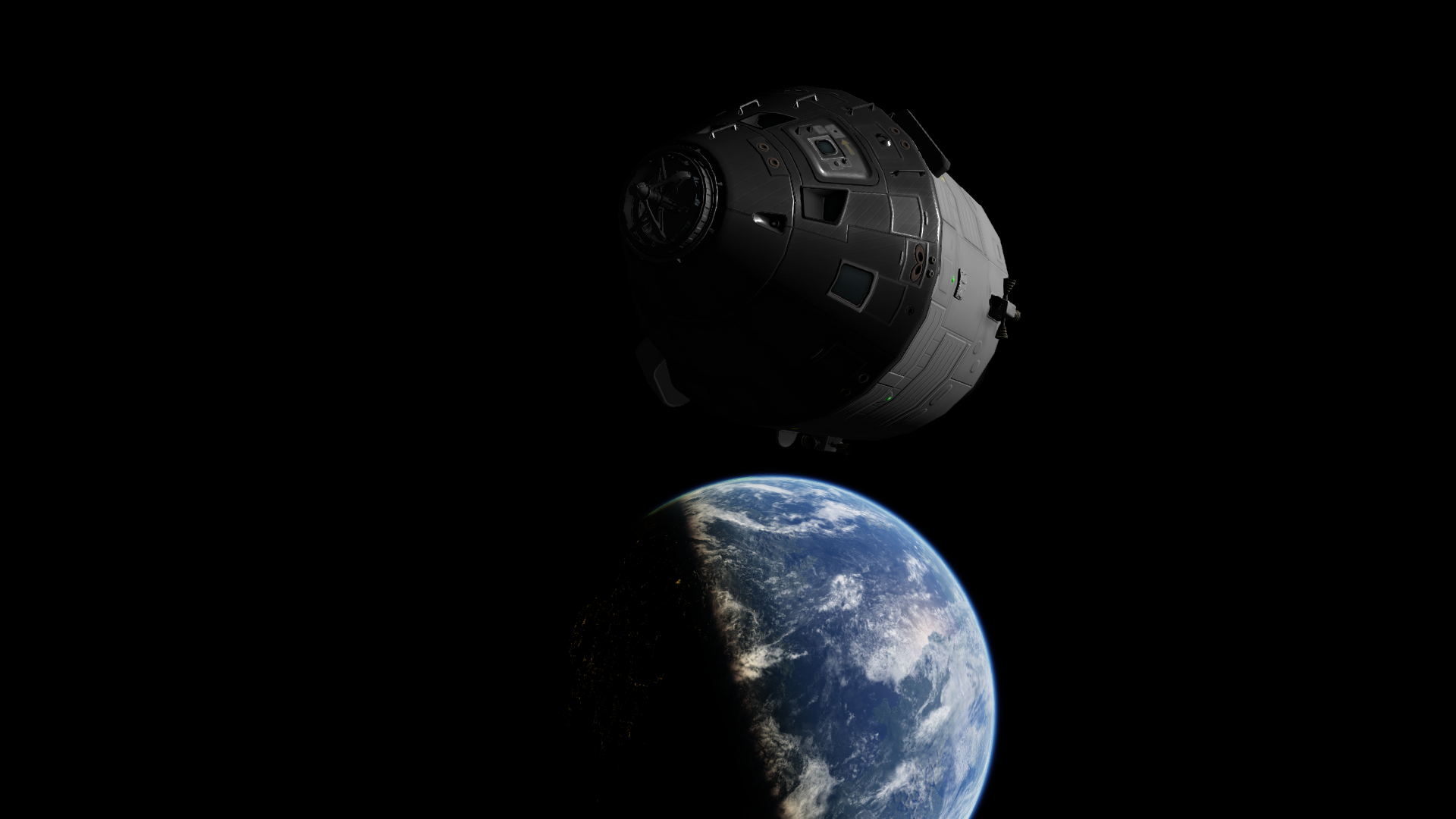-
Posts
331 -
Joined
-
Last visited
Content Type
Profiles
Forums
Developer Articles
KSP2 Release Notes
Bug Reports
Posts posted by Jcking
-
-
2 hours ago, Zorg said:
I presume you mean RS-56 OSA as OBA is the booster engine. I think when we last checked either the OSA had the exact same stats as the final LR105 branded engine or possibly so close we didnt bother (1 or 2 seconds maybe). I'll have to double check.
I suppose there is no harm adding the subtype if its the later case, back then (around the Titan update), we were more reluctant to add minor subtypes as we were just getting our heads around B9 module switching.
From what I recall the only difference is the longer burn time that the OSA has, something that isn’t simulated in BDB and most kerbal mods.
-
5 hours ago, Donnie Azoff said:
Thank you Bluedog Design Bureau dev team! This mod is amazing!
Hope my obscene build doesn't make you regret your work
 I called it "A Shelter with Wheels". It's really stable.
I called it "A Shelter with Wheels". It's really stable.
I would like you to know that this was seriously considered (but saner heads prevailed and MOLAB went forward instead until that died).

-
18 hours ago, Pudgemountain said:
Do you have Breaking Ground? You need Breaking Ground to load Skylab.
Only the truss bit requires Breaking Ground. All other Skylab parts are unaffected.
-
On 10/27/2022 at 3:17 PM, G'th said:
The main thing about the MEM I think is that a lot of artistic liberty would have to be taken to make it actually look good next to the rest of BDB or any other comparable mod, but also do it while not being an unfeasible nonsense design (in terms of it wouldn't have ever worked on an engineering level IRL), but while also, I think, allowing for the lego-ness of it.
And that would take some informed artistry to really accomplish, as the MEM as originally designed technically wouldn't have worked, but thats only because NA never got to the point where they could redesign it after a presumed Viking program fed them more data on Mars. Interestingly though, it wouldn't have taken much to do it. A slight diameter upgrade to 10m and some slimming down could have gotten the MEM into a suitable weight range, and at that point all you strictly need is the right engines. Designing it for aerobraking in addition to retropropulsion would also have helped to allow for more payload weight. Plus, there's also the other MEM derivatives to consider as well, as it wouldn't have just been the lander if they ever got built. Cargo and Habitat-only variants would likely have been designed as well around the same aeroshell/heatshield chassis.
But there's also other ways to do it, though much less feasible. If you wanted to do something like Viking architecture, you'd actually have to scale up to a 15m diameter and would need a pretty beefy ballute/parachute (and I mean beefy). And there's also the option of doing nested heat shields, where one is used for aerobraking before being jettisoned, and then the interior one is much lighter; that could work and would be nice in KSP as you'd avoid all the struggles of not having that system destroy itself.
The other big issue with the MEM too is the scaling of it, as even at realscale its a pretty cramped vehicle as designed, so some attention would have to be paid to how scaling it down interacts with kerbals.The NAR MEM was an aerobraking/retropropulsion design with ballutes deployed at mach 3.5 and jettisoned at mach 1.5, at which point retropropulsion with a 140,000 lbf FLOX/CH4 aerospike begins bleeding off excess velocity until touchdown.


-
28 minutes ago, billbobjebkirk said:
There is some more stuff in The Lunar Exploration Scrapbook by Robert Godwin, I wouldn't know where to go for something more comprehensive and technical short of asking the author about his sources...
What is called the ALSS lunar base is the SLA mini-base (which sadly the report isn't on the public internet).
-
1 hour ago, Blufor878 said:
I decided to get around to making an Apollo Direct Ascent lander. @EndAllFilms requested it a while back, and I decided if I'm gonna make all these orbital vehicles, I should have a proper lander. My design is loosely based on the July 1961 proposal (middle top row).






I don't have this on KerbalX yet, I'm still playing around with it. But so far it seems to work. You have to keep the engines on for almost the whole descent. Thankfully it has enough delta V to do so, and make it back to munar orbit, and even get back to Kerbin. That is assuming you didn't use any fuel in the craft for munar orbit injection. Some pretty tight margins here (at least for me, but I am a bit of a noob/amateur on this sort of thing).Funny thing is that the July 1961 baseline vehicle uses solid propellant motors for the circumulunar, lunar orbital and lunar landing versions (with an increasing amount of solid motors depending on the mission). There is a what I presume to be a contractor version (can't tell for sure as the document only refers to it as Design II) of Apollo that uses the conic capsule from July of 61 is all liquid storeable propellant, but with an unusual SM arrangement.
Spoiler


-
1 hour ago, Alpha512 said:
also an air-augmented aerospike if i get it right?
Yeah, the basic idea was that you can burn atmospheric oxygen with fuel rich engine exhaust for extra thrust. This also allows you to reduce the amount of LOX on board the vehicle.
-
13 minutes ago, GoldForest said:
I don't think of any of the NASA Novas had aerospikes. I think MM or GD used some, but not NASA.
There's roughly two different NOVAs, the early ones (which include your NASA NOVAs) were around as capable as C-8 (and the baseline nova was practically identical to C-8 with the exception of a two M-1 second stage), and the later ~1 million lbs to orbit NOVAs. For the latter, having the F-1, and M-1 modeled isn't as useful as one would think.
-
4 hours ago, Beccab said:
I was able to find the report on the wayback machine
https://web.archive.org/web/20100520060542/http://ntrs.nasa.gov/archive/nasa/casi.ntrs.nasa.gov/19890068698_1989068698.pdf
(no idea why it's 1989 in the link, it's from 1963)
It talks about a... toroidal engine apparently? Idk, it almost sounds like an aerospike from the description but the drawing definitely isn't of one, and it says it has an expansion ratio of 150 which doesn't seem particularly high for an aerospike (especially one that doesn't start from sea level) but at the same time would be very high for a conventional nozzle. Idk, it's some weird stuffExpansion Deflection, not bell. It's a type of altitude compensating nozzle. Rocketdyne worked on a couple, and Aerojet built and test fired one.


-
8 minutes ago, Rutabaga22 said:
Woah! What's that?
A version of Voyager Mars. A orbiter and lander combination similar to Viking, but two are launched at a time by a Saturn V.
-
Re: C-8. Below are MSFC critiques on the program as of June 23, 1962.
"The schedule is shown is considered optimistic even with the assumptions listed. It is a success schedule in which nothing goes wrong, all technical judgements are correct, and there are no failures. The six (6) vehicle R&D program is extremely undesirable considering the jump in technology from Saturn C-1 to C-8. The decision required on July 1, 1962 to meet the schedule cannot be made without a major change in NASA policy and without a complete disruption of the Apollo program and the thousands of personnel now doing productive work towards the mission objective. A major redirection at this time would cause considerable delays in the schedule to bring C-8 to the same status that C-5 is today. Based on past experience at MSFC in implementing programs of this magnitude, it is estimated that the first C-8 flight could take place in May 1967. This allows for time to stop the presently approved C-5 program and to the define the C-8 program in sufficient detail that decisions can be made, facilities can be started and the contractors can be given sufficient information to start the stage development. Considering the technical uncertainties in the C-8 development, a 10 vehicle R&D program is almost mandatory although secondary missions could be flown starting on flight No. 6. Manned flights should not be considered prior to No. 11 in March 1969."
-
10 minutes ago, Pudgemountain said:
Is there gonna be a Comet rocket in the future? lol.
Not any parts specifically for the SEIs Saturn derived HLLVs, but the parts are there for you to make one.
-
6 minutes ago, Hay said:
Could we also get a ring type fairing base for the 6.25m SLA fairing base? For S-II based WW space stations
Already is one I believe.
-
25 minutes ago, Probird_23 said:
Is there a dev thread for that mod?
Nothing is in a playable state at the time of this message, so just sit tight.
-
1 hour ago, Socowez said:
Pyrios would be a good addition to SOCK if STS Block 2 ever gets there.
There are several dozen shuttle upgrades that fall under STS Block 2 or Shuttle 2. Some of them similar, quite a few contradictory.
-
1 hour ago, GoldForest said:
Don't use Shall Not Be Named.
Besides, having an actual part and not a resized one is always better imo.
The 2.3.12 version made for 1.4.2 still works fine (plus you don’t need all the dependencies that the newer ones require), and tweak all removes the limitations on configs. The version checker complains that it’s out of date, but that means nothing.
-
6 hours ago, GoldForest said:
@CobaltWolf @Zorg @Invaderchaos Got a part request. I was wondering if we could get a Pyrios booster like skirt for LDC so we can use LDC as Pyrios.
Tweakscaled MLV LRB engine mounts should be just fine.
-
6 hours ago, Pappystein said:
While Benjee10 is currently working on the ArCK mod, they have been steadily upgrading Habtech2 and at some point I would be willing to put money down on a refreshed CMB (after all the APAS just got a major upgrade!)
Well's KNES has a good CBM as part of it.
-
1 hour ago, SpaceFace545 said:
It sadly wasn’t. When designing this vehicle Boeing was looking to develop a cheap, big rocket that would complete its job in the simplest manner.
On the contrary, a reusable version was studied, but was an entirely new vehicle more or less (note that the LOX and LH2 tanks are now conical with flat bulkheads and are made out of 32 segmented multicellular tanks to provide a lighter but more expensive tank structure). Recovery of strapons would consist of a tail first entry with a 70ft diameter ballute providing stabilization for the SRMs and parachute providing deceleration. recovery system weight is expected to be ~40,000 lbs (unknown if this is per strapon or for all strapons). Recovery of the injection system would consist of a base first entry using main engines for deorbit with a balloon or ballute/ parachute system providing stabilization and deceleration. recovery system weight for that is expected to be ~98,000 lbs.

-
1 hour ago, GoldForest said:
Well, LMLV would have a purpose. Single launch Mun base missions, Single Launch Duna Base missions, Single Launch anywhere in the kerbolar system missions. And for those with other solar systems, a way to quickly launch a mission there. I mean, why use a Delta Heavy with complicated slingshot maneuvers when you can just one shot a 100 ton craft there. LMLV was made to lift 3.5 Million pounds. That's close to 1,600 metric tons. In KSP that's about 800 tons? Give or take a hundred? I would like an 800 ton lifter. I could put a Saturn V on Lathe!
1140 tons (AMLLV is a 4 million lbs to orbit max). As for single launch bases to mun or duna, the parts available in mods and in stock aren't large enough to justify that (even the massive 5m centrifuge from SSPXR is only like 20 tons), and for fun you could launch 14 of FFTs antimatter beam engines to orbit at their full extension. Maybe in KSP2 there will be good use cases for such large vehicles, but not in KSP.
-
5 minutes ago, GoldForest said:
Sea Dragon? Nah. Sea Dragon weak. Give me, Super Orion Nuclear Pulse Propulsion Interstellar Ark:
But that's a little big, even with Hanger Extender, so I'll settle for: Boeing's Large Multipurpose Launch Vehicle:

A rocket powered by SRB's the width of the Saturn V and a core with a aerospike the size of a small island. I also think the aerospike used SMART tech, so it was recoverable.
So obsessed with big rockets, but when you get them you realize that there isn't much if anything in the game or mods to justify them, so they sit unused.
-
6 hours ago, Pappystein said:
I ***THINK*** one of the cylidrical SMs for Big-G was to have De-orbit... but it wasn't one of the final two that were chosen (if you read my post a week or so ago on this I said there were 3 Service modules... Turns out that the one which was in between the Connic and the Titan Min-Mod SM was culled before the report was submitted. I ***THINK*** that one had de-orbit motors (probably the same STARs as most of the other Gemini)
Wouldn't that make it 4 SMs? Mini Mod Big G IIIM, S-IB conic, Advanced Big G INT-20, and this culled one?
EDIT: Logistics Spacecraft Evolving from Gemini Volume I Summary Report states that "A third configuration was considered prior to mid-term but was dropped with the deletion of the Saturn IB launch vehicle as a study requirement", and the launch configurations and the final concepts consider lead me to believe that it was the conic Saturn IB version that was culled instead of a cylindrical design.
For reference, here are the two configurations ultimately put forth (not shown is that the propulsion module separates from the cargo module at right about the RCS cluster, but both don't use solids).
-
9 minutes ago, RocketBoy1641 said:
Aware of NTRS; but sadly the timeframe that I really like to get ahold of tends to be lacking. Also, there is so much stuff that NTRS doesn't cover since it was contractor ideas.... but when it is paid for by tax dollars and as old as I am looking for (Gemini to early shuttle period) I don't see why that stuff is not covered other than the "if we pull it from public domain we can sell it!" ideas.
Internal contractor ideas that never even made it to the restricted/limited distribution/classified section of NTRS were either lost, destroyed, or still in boxes in company, museum, or college archives; or even someone’s attic.
-
1 hour ago, RocketBoy1641 said:
Anyone else run across stuff that isn't locked behind privileged access or pay access, please share.
The JSTOR papers you can make a free account and get to read 100 or so per month. However you are given the pages as images so go to your page info or inspect element to grab them and save them. IEEE, AIAA, SAE stuff you can usually find on NTRS for the modern stuff (1990-) if they were actual NASA papers and not by contractors. Beyond that search up the name of the paper in quotations and you might come across another website that hosts it for you to download for free (though I cannot vouch for the trustworthiness of said site(s)).
As for sites with freely accessible papers: NASA Technical Reports server, Internet Archive, Hathitrust, OSTI, UNT government documents department.
Listings has around 12,000 pages of NTRS numbers and titles which some plugged into the webarchive using the old CASI link format (like the ones in my previous post) will bring back captures of documents which are either difficult or impossible to find any other way.









[1.12.5] Bluedog Design Bureau - Stockalike Saturn, Apollo, and more! (v1.13.0 "Забытый" 13/Aug/2023)
in KSP1 Mod Releases
Posted